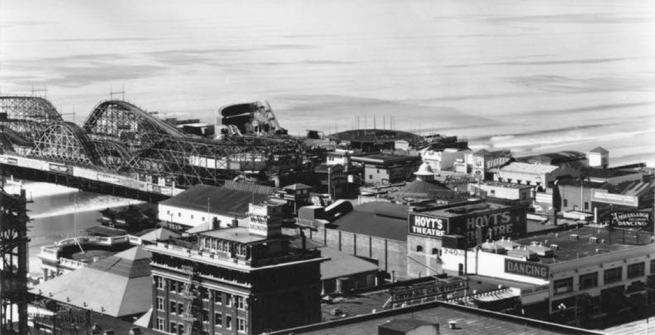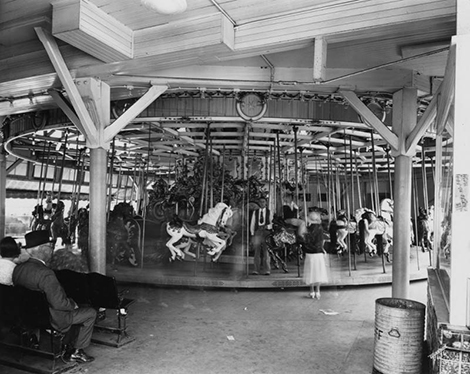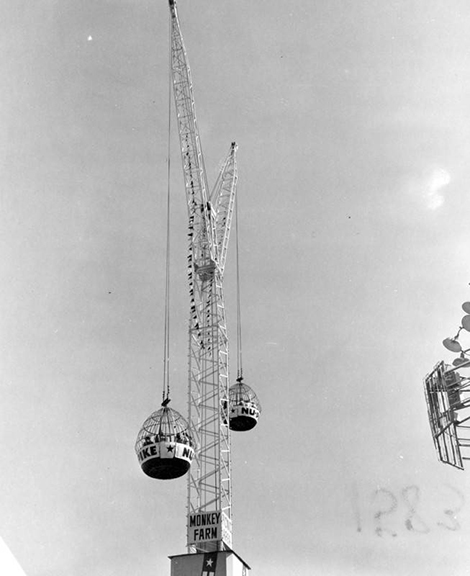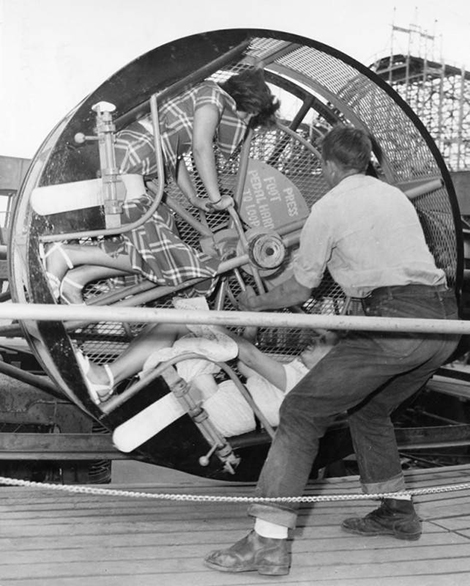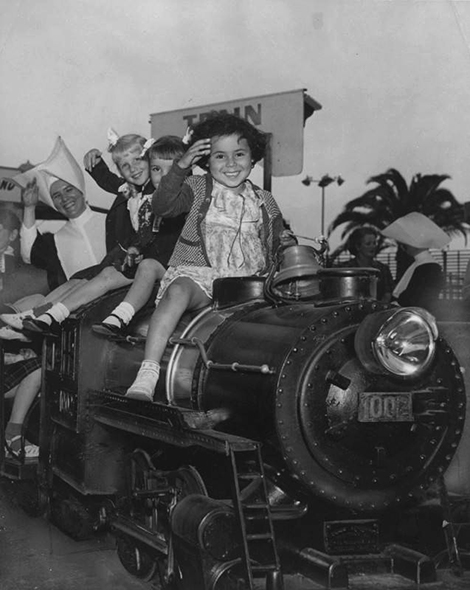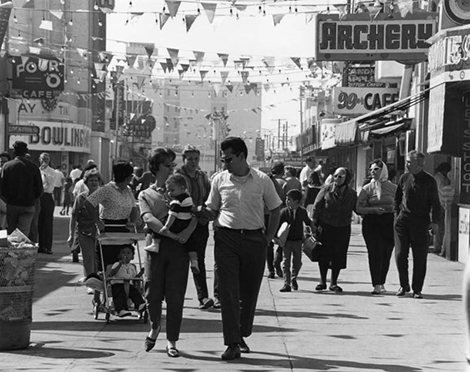William Willmore had a brilliant idea. He was going to create a farming community on the coast of Southern California. He bought 4,000 acres of Rancho Los Cerritos and subdivided the land into plots which comprised Willmore City. Living there would be idyllic, with plenty of sunshine all year round and cool ocean breezes in the summer. People would flock there to live! Unfortunately, his plans did not pan out and he was bought out by the Long Beach Land and Water Company. His erstwhile agricultural paradise became the City of Long Beach.
Five years later, a huge bathhouse opened at the spot in Long Beach where the Pacific Electric Railway’s Red Car ended its traverse from Los Angeles. People did flock to the area, coming to bathe, many people did not have bathtubs or showers [or even indoor plumbing] at the time, and afterward enjoy a stroll along the Long Beach Municipal Pier. The bathhouse was known as the Plunge and the nearby boardwalk as the Pike.
The Pike attracted people of all ages and developed from a simple wooden boardwalk along Pine Street to an amusement zone complete with food stands, gift shops, and carnival rides. Also known as Silver Spray Pier, Nu-Pike, Queens Park, and the Walk of a Thousand Lights at various times, the Pike was an amusement extravaganza that attracted fun seekers for over 75 years. While we cannot visit it today (it was demolished in 1979), the photo collection of the Los Angeles Public Library enables us to take a stroll down the Pike and enjoy the pleasures of its past.
Seen in the background of this photo, the Cyclone Racer replaced the Jack Rabbit Racer in 1930. A dual-track roller coaster, two trains could run at the same time, it was 94 feet high, had 17 hills and drops, and could accommodate 2,400 riders per hour. The coaster was designed by Frederick Church, built by Harry Traver, and regarded as one of the greatest wooden roller coasters ever constructed. It was featured in the hilarious climax of the movie Abbott and Costello in Hollywood. It ran until 1968.
In the early 1950s, the Pike was still a destination for many locals but began to face stiff competition from nearby Knott’s Berry Farm (a restaurant/shop complex which added a carnival aspect in the 1950s) and the newly opened Disneyland. Moreover, the Pike had gained a free-for-all reputation which dissuaded many families from visiting the park. The amusement zone underwent a renovation, installing a Kiddieland with children’s rides plus a petting zoo. Discounts and coupons were offered to families and various facilities (the bathrooms, for example) were upgraded to give the area a more modern look. A write-in contest was held to find a new name for the amusement park, with Nu-Pike being the winner.
The sideshow on the midway of the Pike offered visitors a myriad of curiosities including a sword swallower, a snake charmer, a mystery girl, and other magnificent marvels. (NOTE: A real oddity was discovered at the Pike during the 1976 filming of an episode of the television show The Six Million Dollar Man. The Laff in the Dark Ride featured a hanging corpse, presumably made of fiberglass and leather. When someone on the set accidentally pulled off one of its arms, a physician examined it and discovered it to be an actual human corpse. An investigation revealed that it was the body of Elmer McCurdy, a bank robber whose corpse had at one point been displayed by a wax museum onsite at the Pike. The museum closed and McCurdy wound up in the carnival ride. An autopsy revealed that he had been killed by a bullet and had a 1922 penny in his mouth. His remains were shipped back to Oklahoma.)
Should you wish to peruse more photos of Nu-Pike, see Stephen Brown’s book The Pike (Past Its Peak) available at the Art & Recreation Department in Central Library.
Written by Annie Murphy. Originally published on the Photo Friends Blog on January 7, 2019.
